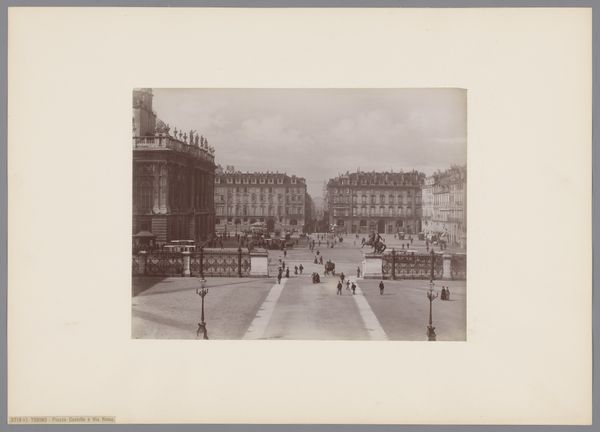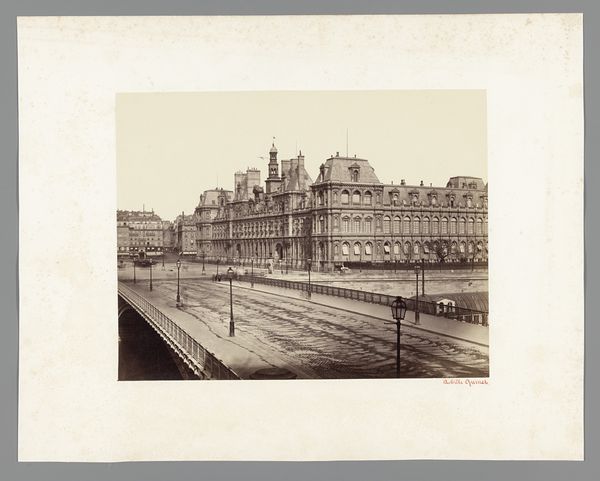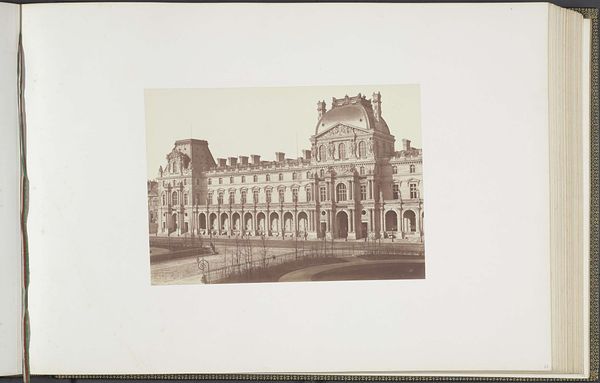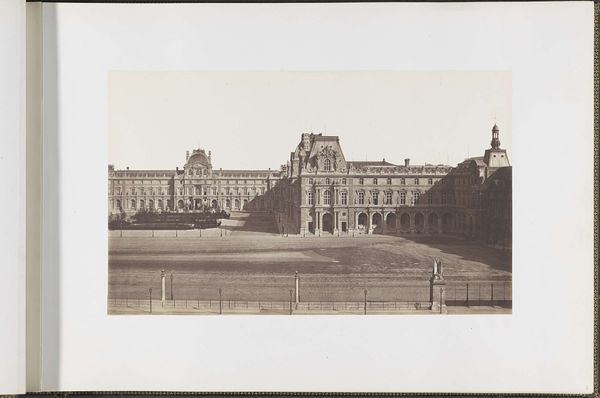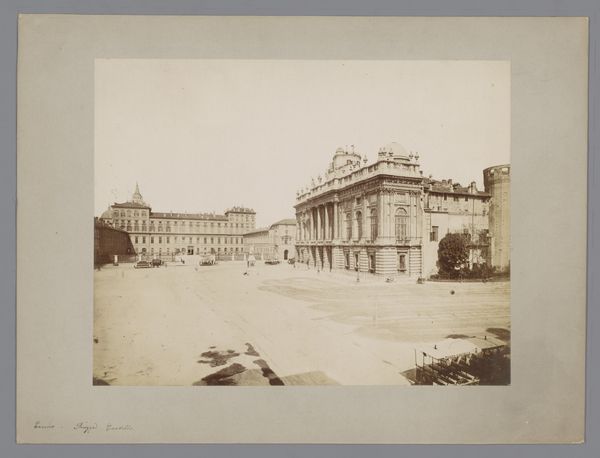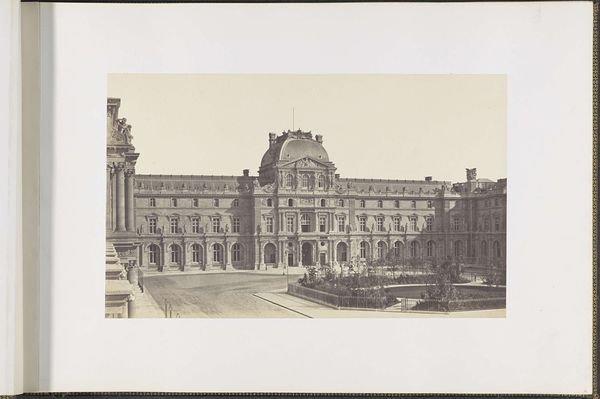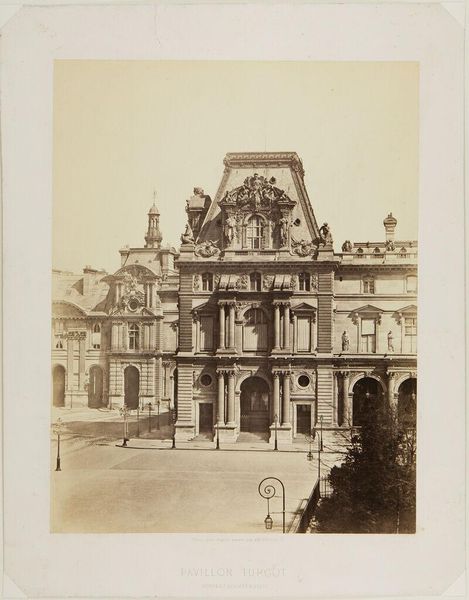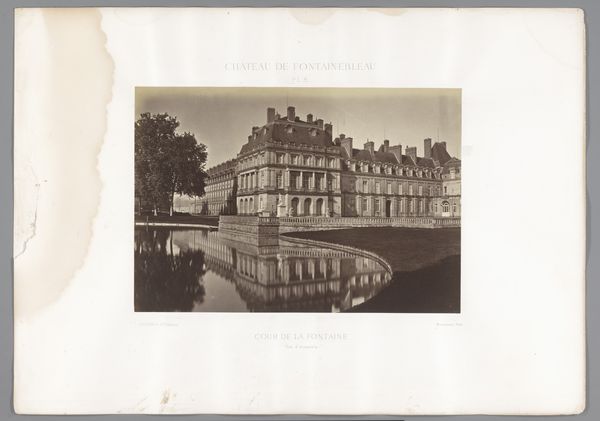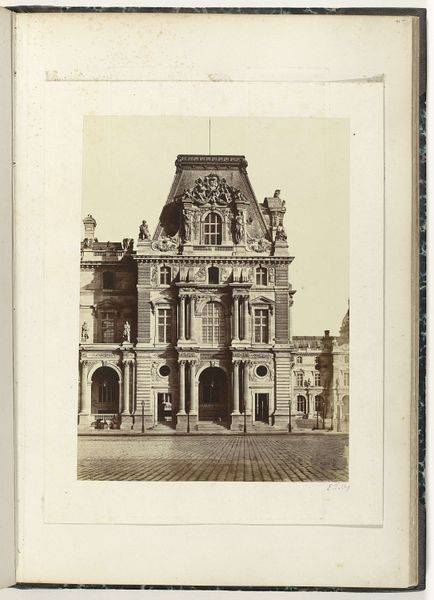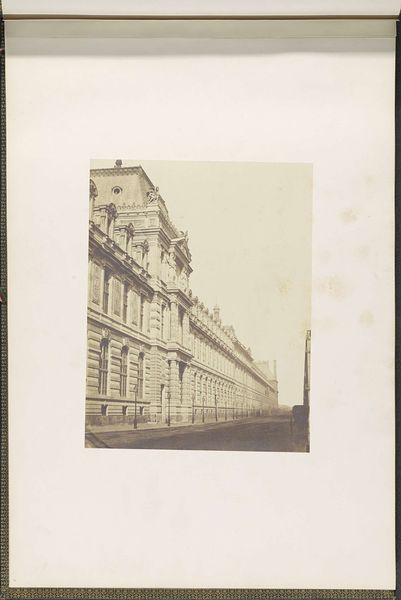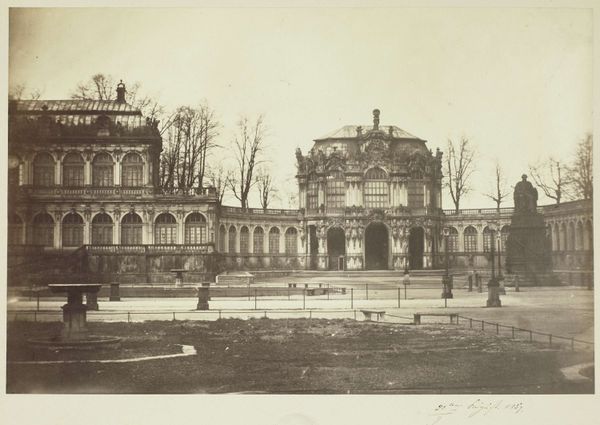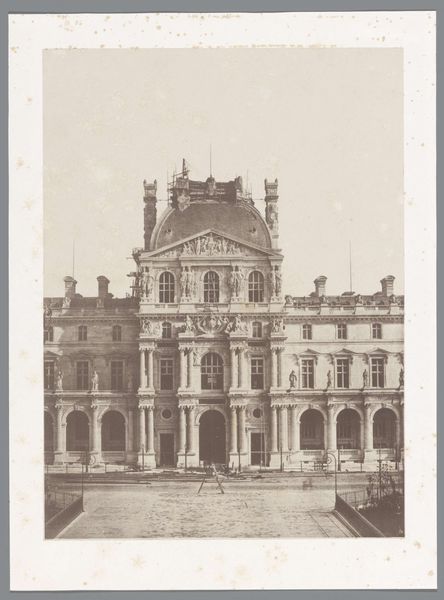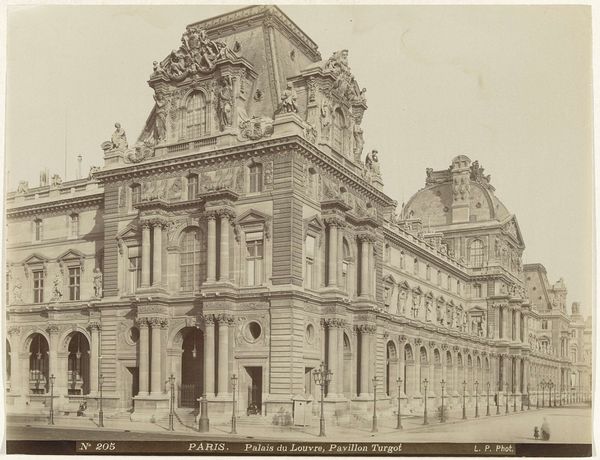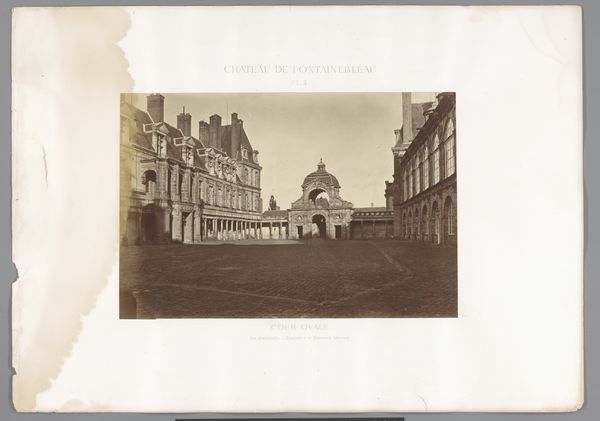
De Arc de Triomphe du Carrousel en de Cour Napoléon gezien vanaf de Tuilerieën c. 1857
0:00
0:00
edouardbaldus
Rijksmuseum
Dimensions: height 378 mm, width 556 mm
Copyright: Rijks Museum: Open Domain
Curator: I'm struck by the melancholic grandeur. It's all so formal, so perfectly arranged, but something about the light feels… absent. Editor: That’s interesting. Well, here we have Édouard Baldus's circa 1857 photograph, taken from the Tuileries, showcasing the Arc de Triomphe du Carrousel and the Cour Napoléon. Curator: Baldus, a Romantic spirit, saw architecture not just as stone and structure, but as carriers of history and power. Arches, in particular, serve as potent entry points to different levels of reality and meaning. The monumental architecture reflects ambition, dominance. The tones, however, are hushed, drained—almost as though the very air holds its breath. Does it make anyone else uncomfortable? Editor: Perhaps it speaks to the burden of legacy? The weight of empire reflected in every meticulously rendered stone? Notice how the daguerreotype's detail emphasizes the coldness, and somehow evokes the sense of an empty stage. Is the performance over, the actors gone, leaving only the props? Curator: Absolutely. Also, Baldus gives equal emphasis to everything—the stones in the foreground, the figures on the archway, the architecture. There’s no focal point pulling the eye; every element possesses a quiet insistence, each demanding acknowledgement. It creates a sort of… visual democracy where everything matters, but nothing sings. And while the light does grant a feeling of ethereal timelessness, I believe that there is no escaping its rigid geometry. Editor: I never would have imagined that my intuition could reveal an element of visual democracy! This almost makes me re-evaluate my perspective of art as mere aesthetic composition! So, in this particular work, Baldus masterfully harnessed early photographic technology to highlight enduring symbolic undertones, but these symbols can have opposite readings depending on your perspective, it seems. It truly evokes contemplation. Curator: Precisely. Even with its imposing subject, there is a quiet meditation here—a consideration of permanence, power, and the almost unbearable beauty of ruins. A symbol of not just a past empire, but also of how little remains. Editor: A powerful photograph indeed—inviting reflections on cultural ambition. Thank you for your valuable time, and that’s about all we have for today!
Comments
No comments
Be the first to comment and join the conversation on the ultimate creative platform.
